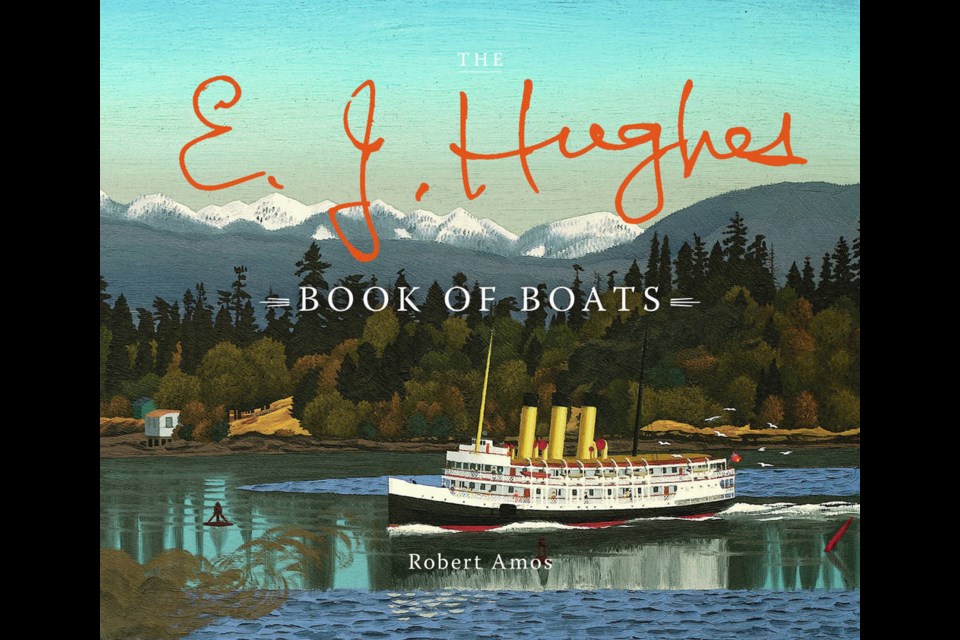Through the course of his lengthy career, beloved Vancouver Island artist E. J. Hughes (1913–2007) unintentionally became known as a painter of boats. Though he wasn’t much of a boater, he clearly enjoyed looking at them. With his artist’s eye, he appreciated their graceful curves, their primary colours and the sort of purposeful activity for which they were built.
The E. J. Hughes Book of Boats by Oak Bay author Robert Amos, Hughes’ official biographer, brings many of the artist’s coastal paintings of paddle wheelers, steamships, fishing boats, and car ferries, as well as photographs and ephemera from the artist's estate, together in one handsome volume for art lovers and boating enthusiasts alike.
Here, Amos shares a few of his favourite images from the collection, published by TouchWood Editions.
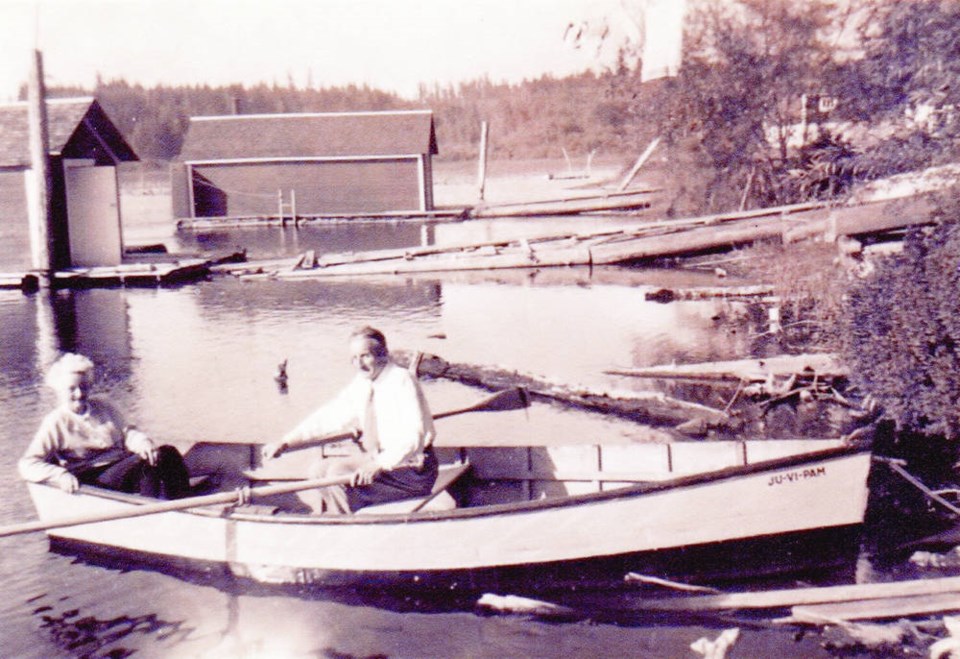
During World War II Hughes served as a Canadian War Artist. Then, following a few unsettled years in Victoria, in 1951 he and his wife, Fern, moved to the peace and quiet of Shawnigan Lake, thirty miles (forty-eight kilometres) north of Victoria. At that time, his parents also moved to Shawnigan Lake and lived next door. They purchased a simple rowboat and named it Ju-Vi-Pam, to honour their granddaughters June, Virginia and Pamela. Hughes took a photo of his parents in the rowboat at the shoreline just below their Shawnigan Lake property.
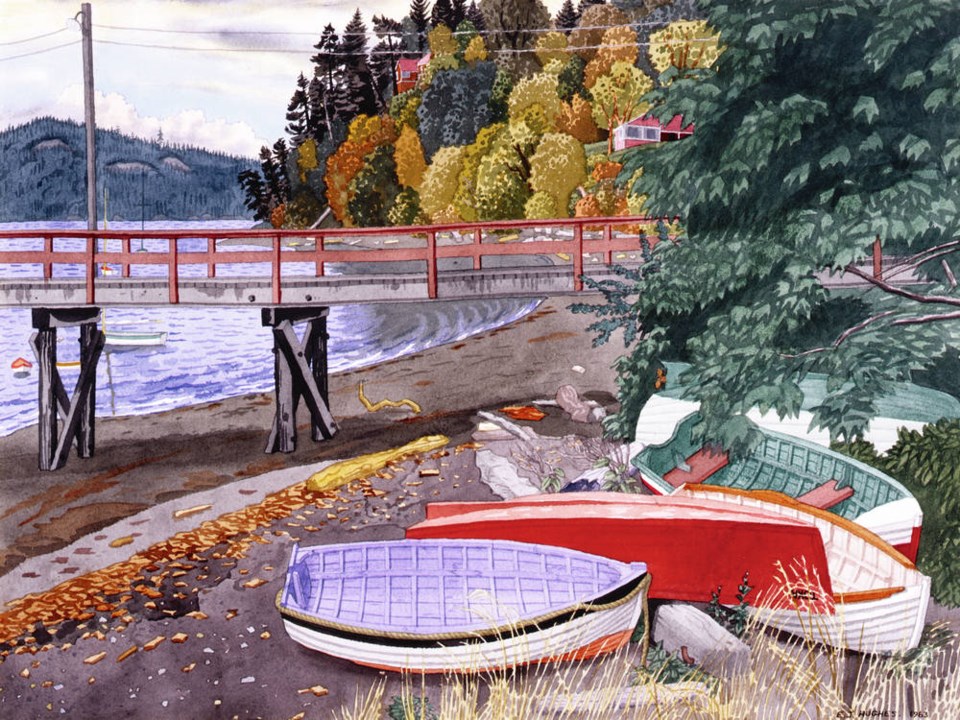
Hughes found the curves of wooden boats on irresistible. His 1963 painting of rowboats at Maple Bay centres on a number of their handmade hulls nestled together.
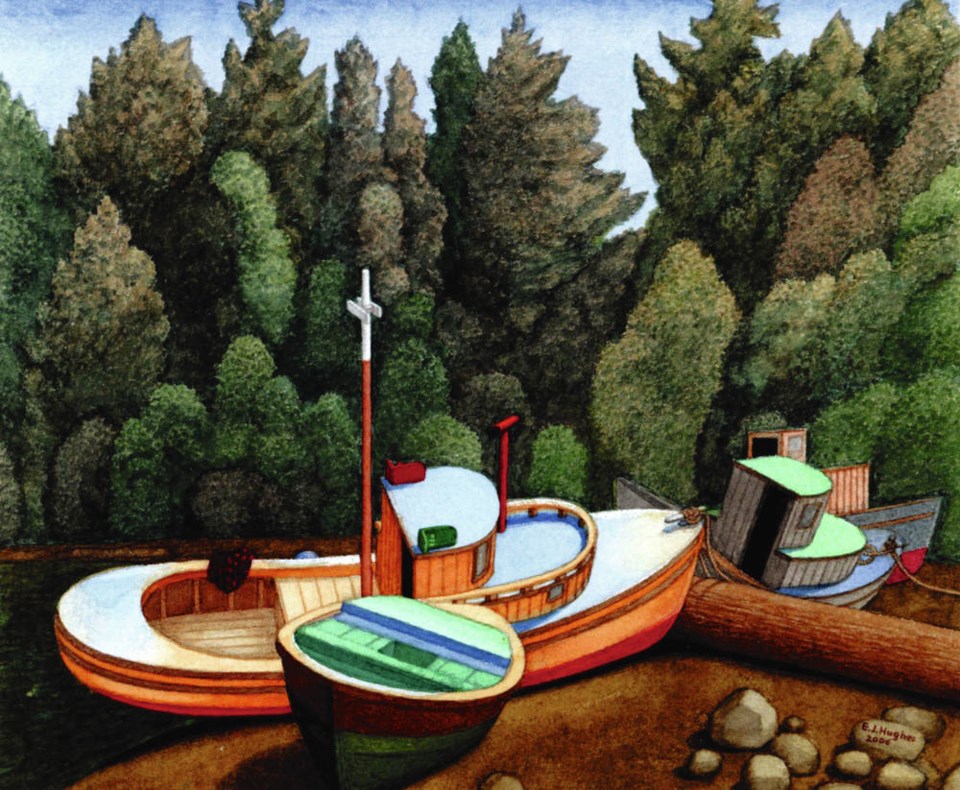
Down south near Victoria, Hughes found seine fishing boats pulled up on the shore. Roberts Bay is north of Sidney on the tip of the Saanich peninsula, about 30 kilometres from Victoria. The shore and tidelands are a highly productive ecosystem which sustains a diverse community of birds. Roberts Bay has been a federally-mandated bird sanctuary since 1931.
In the spring of 1948 Hughes went to Sidney by bus to do some sketching. He walked north of town for about 15 minutes to Roberts Bay. There, pacific Great blue herons were feeding in large numbers on the shallow mudflats.
Roberts Bay is a good place for fishermen to beach their boats and do necessary repairs when the tide is out. Hughes drew a dory and three wooden boats at rest on the sand, among rocks and logs with a dark forest behind. The boats are painted in a carousel of colours and the artist has stripped their shapes to the essentials. A black and red checked shirt is slung across the port side stern deck to balance the composition.
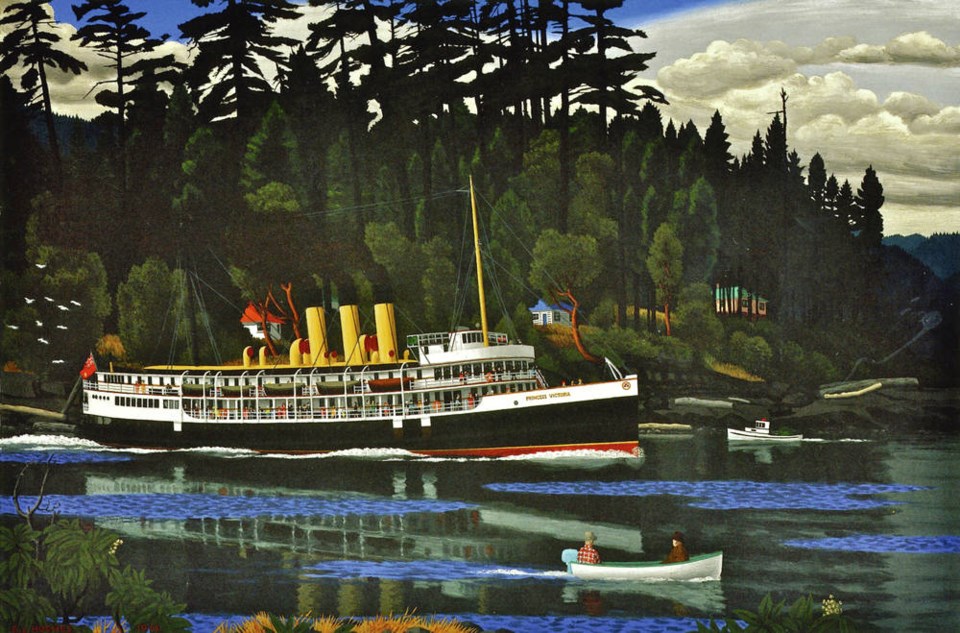
The Steamship Princess Victoria was built in 1903 at Newcastle-upon-Tyne for the Canadian Pacific Steamships. She was three hundred feet in length and was designed to go into service on the triangle run between Victoria, Seattle and Vancouver. At first she burned coal but was converted to oil in 1912.
Inspired by fond memories of the stately old ship, Hughes drew it from photographs provided by Canadian Pacific. He set it against a landscape he had drawn at Pilot Bay at Gabriola Island.
In Maclean’s Magazine on Feb. 25, 1966 the painting was featured in an article about Max Stern, Hughes’ dealer. In a letter to his sister, Hughes wrote: “glad you liked the painting of mine in the picture [of Stern’s gallery]. It is strange, everyone seems to know it is my painting, even though there is nothing in type to say so. Perhaps I am becoming noted for my boats… Fern used to joke about my being noted for my boats someday. I guess it would be alright, but I’d rather be noted for composition etc. of various subjects. I’m like an actor who doesn’t want to be noted for being Sherlock Holmes only.”
